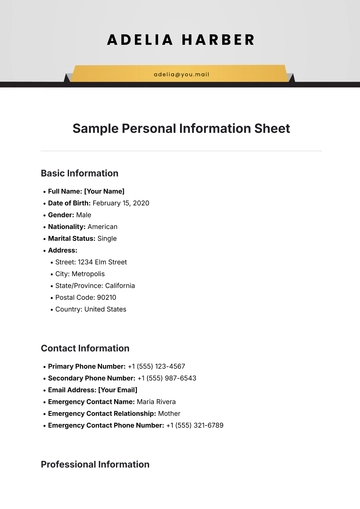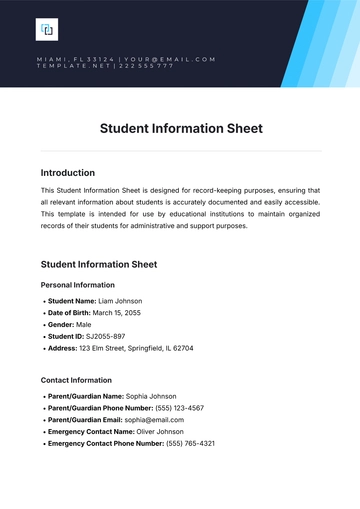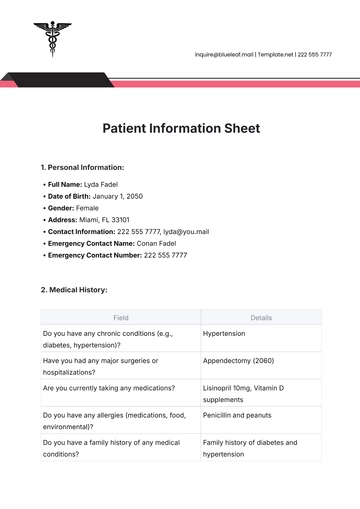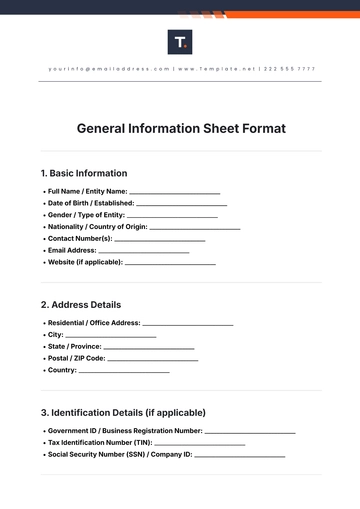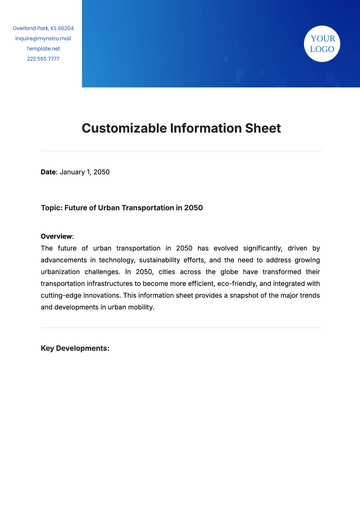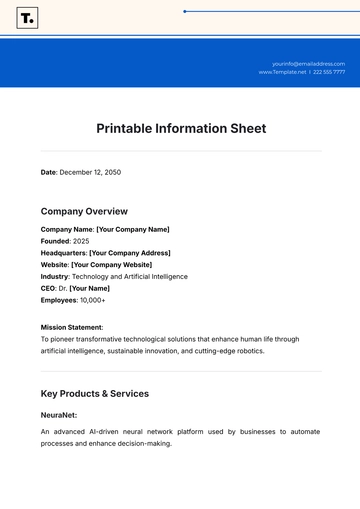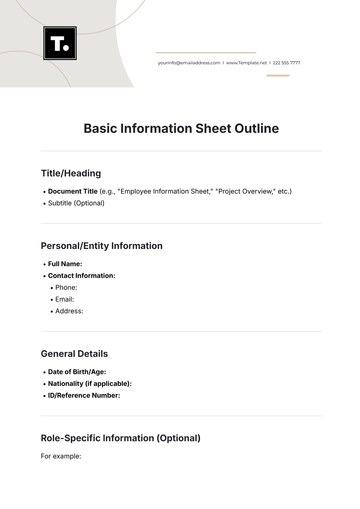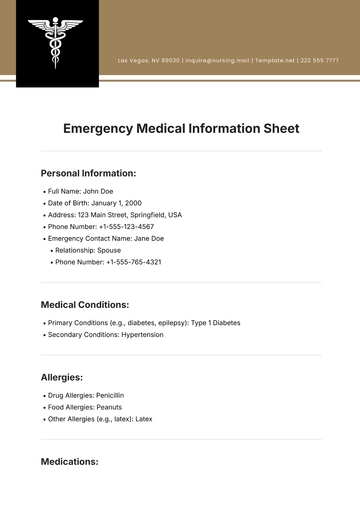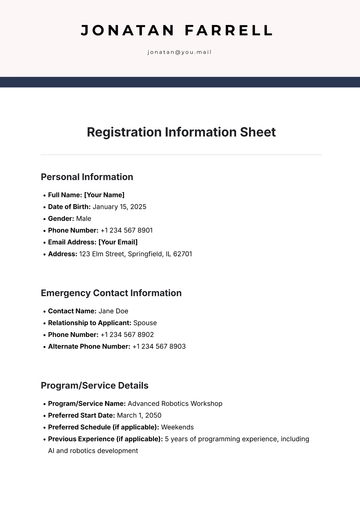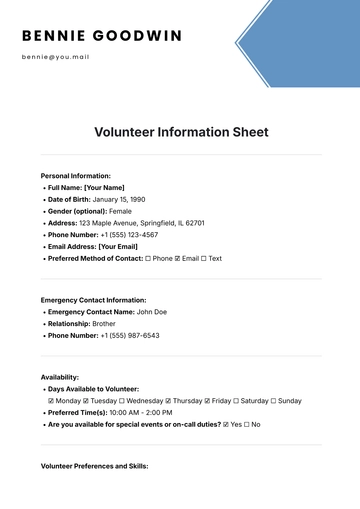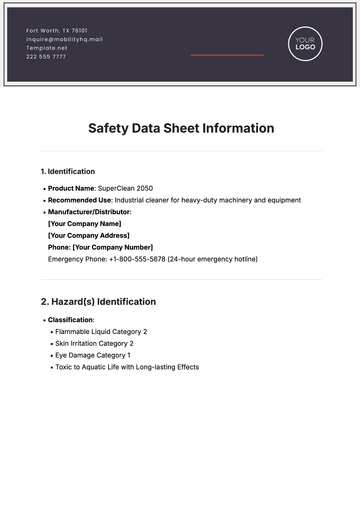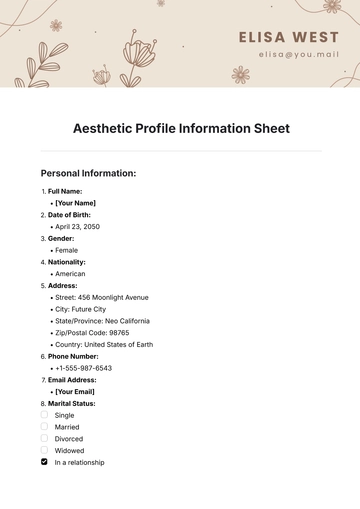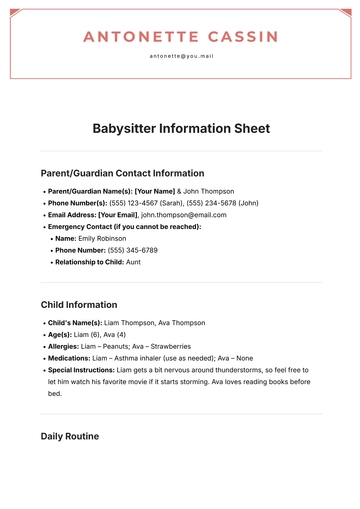Free Disease Fact Sheet
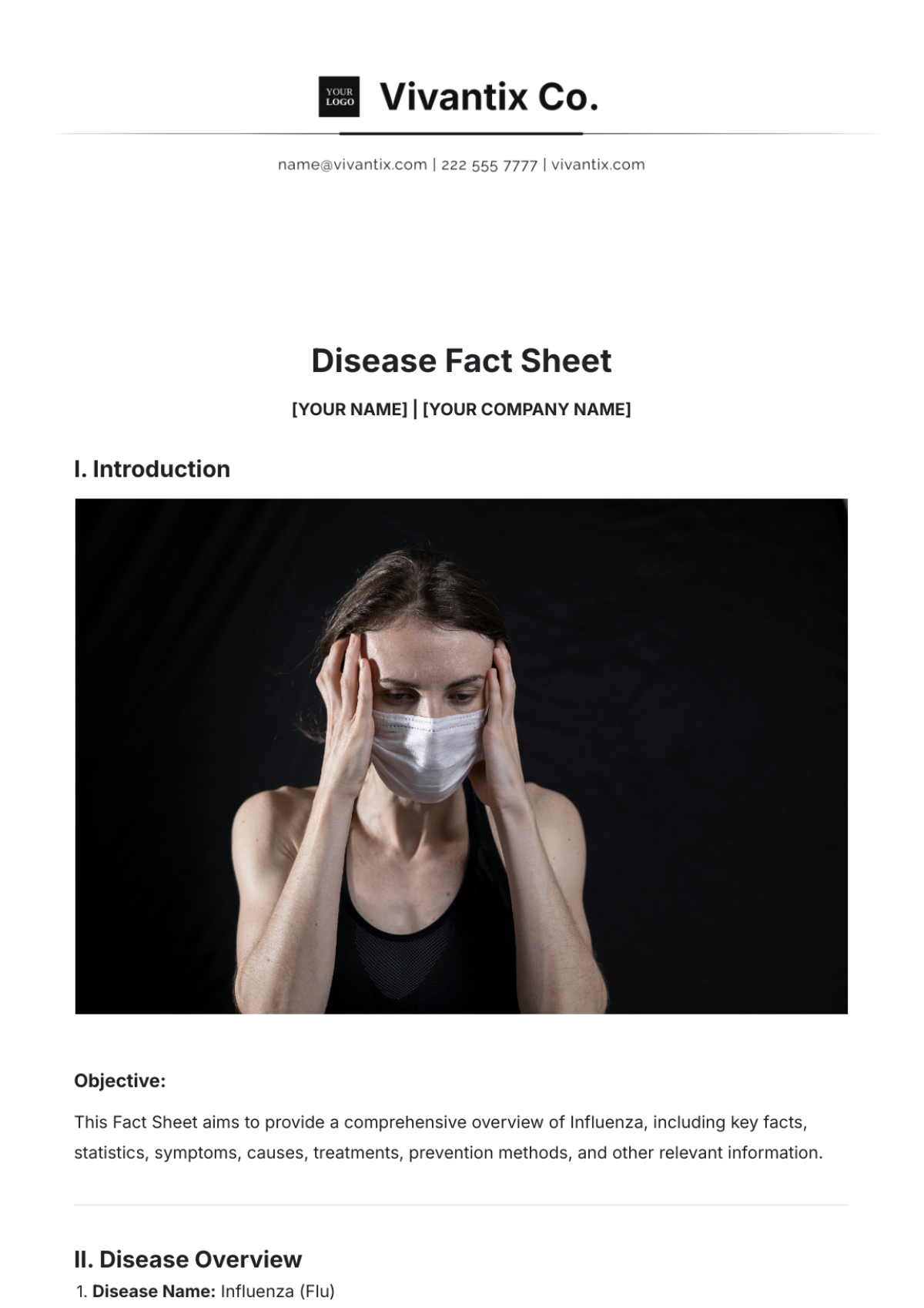
[YOUR NAME] | [YOUR COMPANY NAME]
I. Introduction

Objective:
This Fact Sheet aims to provide a comprehensive overview of Influenza, including key facts, statistics, symptoms, causes, treatments, prevention methods, and other relevant information.
II. Disease Overview
Disease Name: Influenza (Flu)
Definition: Influenza is a contagious respiratory illness caused by influenza viruses that infect the nose, throat, and sometimes the lungs.
Epidemiology: Influenza affects millions of people worldwide each year, with seasonal outbreaks occurring primarily during the colder months.
III. Key Facts
Symptoms:
Fever
Cough
Sore throat
Body aches
Fatigue
Headache
Causes:
Infection with influenza viruses (types A, B, and rarely C)
Spread through respiratory droplets from infected individuals
Seasonal variations and antigenic changes contribute to flu outbreaks
IV. Diagnosis and Testing
Diagnostic Methods:
Nasal swab or throat swab for viral testing
Rapid influenza diagnostic tests (RIDTs)
Polymerase chain reaction (PCR) testing for subtype identification
Screening Guidelines:
Annual flu vaccination is recommended for individuals aged 6 months and older
High-risk groups such as the elderly, young children, pregnant women, and individuals with certain medical conditions should prioritize vaccination
V. Treatment Options

Medical Treatments:
Antiviral medications (e.g., oseltamivir, zanamivir) for reducing the severity and duration of symptoms
Supportive care including rest, hydration, and symptom-relief medications
Lifestyle Management:
Good hand hygiene practices
Avoiding close contact with sick individuals
Covering coughs and sneezes with tissues or elbows
VI. Prevention Strategies
Primary Prevention:
Annual flu vaccination
Promotion of healthy habits such as handwashing and respiratory etiquette
Avoiding crowded places during flu season
Secondary Prevention:
Early recognition of flu symptoms and prompt medical evaluation
Antiviral treatment within 48 hours of symptom onset for high-risk individuals
VII. Public Health Considerations

Outbreak Response:
Surveillance systems to monitor flu activity
Public health campaigns for flu prevention and vaccination
Coordination with healthcare facilities for managing flu-related hospitalizations
Public Education:
Educational materials on flu symptoms, prevention, and treatment
Communication strategies for disseminating timely information during flu outbreaks
VIII. Additional Resources
References:
Centers for Disease Control and Prevention (CDC)
World Health Organization (WHO)
National Institutes of Health (NIH)
Contact Information:
For inquiries or further information, please contact:
[Your Company Name]
Email: [Your Company Email]
Phone: [Your Company Number]
IX. Vaccination Rates
Flu Vaccination Coverage Trends
Below is a bar chart illustrating the trends in flu vaccination coverage rates over the past five years:
Key Insights:
Year 2050: 45% vaccination coverage
Year 2051: 55% vaccination coverage
Year 2052: 60% vaccination coverage
Year 2053: 50% vaccination coverage
Year 2054: 65% vaccination coverage
Year 2055: 70% vaccination coverage
Importance of Vaccination:
Higher vaccination rates correlate with reduced flu-related hospitalizations and deaths.
Encourage regular flu vaccination to protect individuals and communities from seasonal flu outbreaks.
- 100% Customizable, free editor
- Access 1 Million+ Templates, photo’s & graphics
- Download or share as a template
- Click and replace photos, graphics, text, backgrounds
- Resize, crop, AI write & more
- Access advanced editor
Access the Disease Fact Sheet Template on Template.net for informative disease summary creation. This editable and customizable template aids healthcare professionals in presenting disease facts clearly. Customize the fact sheet effortlessly using our AI Editor Tool, ensuring accurate and detailed disease information. Simplify disease education and communication with this user-friendly and comprehensive template.
You may also like
- Attendance Sheet
- Work Sheet
- Sheet Cost
- Expense Sheet
- Tracker Sheet
- Student Sheet
- Tracking Sheet
- Blank Sheet
- Information Sheet
- Sales Sheet
- Record Sheet
- Price Sheet
- Plan Sheet
- Score Sheet
- Estimate Sheet
- Evaluation Sheet
- Checklist Sheet
- Bid Sheet
- Call Log Sheet
- Bill Sheet
- Assessment Sheet
- Task Sheet
- School Sheet
- Work From Home Sheet
- Summary Sheet
- Construction Sheet
- Cover Sheet
- Debt Spreadsheet
- Debt Sheet
- Client Information Sheet
- University Sheet
- Freelancer Sheet
- Bookkeeping Sheet
- Itinerary Spreadsheet
- Scorecard Sheet
- Run Sheet
- Monthly Timesheet
- Event Sheet
- Advertising Agency Sheet
- Missing Numbers Worksheet
- Training Sheet
- Production Sheet
- Mortgage Sheet
- Answer Sheet
- Excel Sheet


